With the permission of the Oneida Nation, Fort Stanwix was built by the British in 1758. It is located in the town of Rome, NY.
Our first stop was at the Willett Center at this National Monument. Extensive exhibits tell the story of the fort and conflicts in the surrounding areas in the 1700s.
Located at a strategic position along the Oneida Carrying Place, the fort was designed and built in the classic European design of the era. Below is a model of the Oneida Carrying Place (so named by the Europeans), an ancient trail that connects the Mohawk River and Wood Creek where goods were transported across the land between the two river systems. It was a major east-west travel route linking the Atlantic Ocean to Lake Ontario (and, therefore, all of the Great Lakes) when waterways were the primary transportation system for goods and trade. The French, British, and then the colonists all fought for control of the trail, Mohawk Valley (the homelands of the Six Nations Confederacy) and natural resources in North America.
Here's a brief summary of the role of the fort in our nation's history:
1754: French and Indian War began in America; fighting spread to Europe and was known as the Seven Year War.
1758: British Brigadier General John Stanwix was ordered to build a fort that ultimately ended French invasions in the area and provided a staging ground for the British.
1768: Treaty negotiated at Fort Stanwix ended French and Indian War with the Six Nations Confederacy ceding land east and south of the Ohio River (angering other Native American tribes)
1777: During the American Revolutionary War, the British (along with Native American allies) laid siege to the Fort on August 3 (800 Continental soldiers were inside). Reinforcements arrived 20 days later resulting in the end of the siege; a victory for the Colonists uniting the US, France and the Netherlands against the British.
1784: Treaty of Fort Stanwix with the Six Nations Confederacy was negotiated at the fort, but it resulted in the Ohio's American Indian War of the 1780s-90s.
1788-90: The fort continued to be the focal point for dealing with the Native Americans (Oneida, Onondaga, Cayuga) in the area. Land deals negotiated here allowed canals to be dug in New York, including the Erie Canal.
The fort can be seen in the distance from the visitor center.
A trail with interpretive signs along the way lead you to the entrance of the fort.
This is a reproduction and has been built on the foundation of the original 18th-century fort.
The gate house had a drawbridge that operated on a counterweight system.
Soldiers and traders in period garb provide interesting insight into life at the fort.
The small building is a sentry box. It enabled soldiers to keep their powder dry when reloading their rifles during inclement weather. There are many of them throughout the fort.
The southeast casement was a soldiers' barracks. Ten to fifteen men slept side-by-side on the long, straw-filled beds (cribs).
The southeast bastion (one of four) and bombproof was the first to be constructed at the fort. Embrasures are the opening in the parapet through which the cannon were fired. The bombproof was used as a bakehouse during the American occupation in the 1770s.
The suttler was a civilian trader that was a link between the fort and the outside world. He traded with local Native Americans and periodically took furs to Albany to trade for goods that were sold at the fort. Soldiers had little cash to spend, but when they did shop here they usually purchased food, rum, and tobacco.
This was the highlight of the tour of the fort for our doggie, Sadie (this place is very dog-friendly). Once she found the furs, she didn't want to leave! Park staff let her get a good sniff of the fox and a skunk skins.
Artillerymen quarters are shown below. These were "specialized" soldiers and had a higher pay grade. Regular soldiers were often trained to fill the needed positions to man the cannon at the fort.
Soldiers and sometimes officers were often accompanied by their families. They usually stayed outside the fort and did domestic duties to earn food and shelter to survive. Below are family quarters, although these were quite rare at the time.
Officer (and visiting officer) quarters were, of course, much more spacious with many more amenities.
This room would have been used by the Commandant and his staff as a dining room and strategic planning room.
Punishment for crimes were usually public and humiliating. Below is the type of "cell" used to hold prisoners. Note the pole on the left in the photo; this is where offenders were flogged.
Special tradesmen (carpenters, blacksmiths, etc.) were hired to maintain the fort. They would also supervise the less-skilled soldiers in completing tasks. The structure shown below is the artisans' building.
The sharpened wood stakes projecting our horizontally from the fort walls prevented an enemy from using scaling ladders to gain entry to the fort. If a man stood on a stake, it would likely break. These proved to be very effective when the fort was under siege in 1777.
We had not previously heard of this fort that played an important role in our nation's history. The Willett Center is full of interesting information and displays about the history of the area. If you are a history lover (and we are!) and in the area, I would definitely recommend a visit. There is no fee and it is very dog-friendly. The National Park Service does such a great job at our National Monuments!
For additional information about Fort Stanwix, click on www.nps.gov/fost.
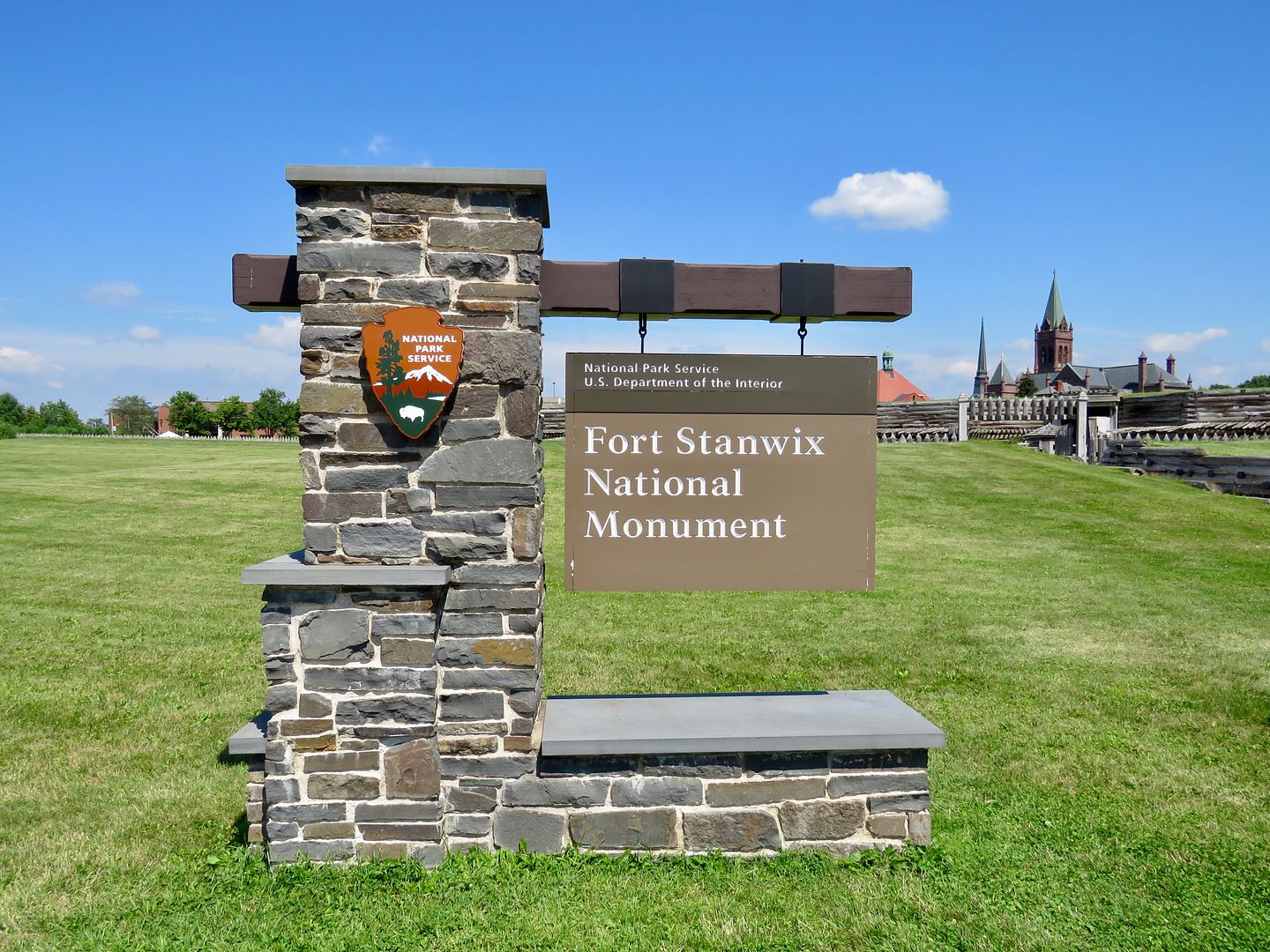



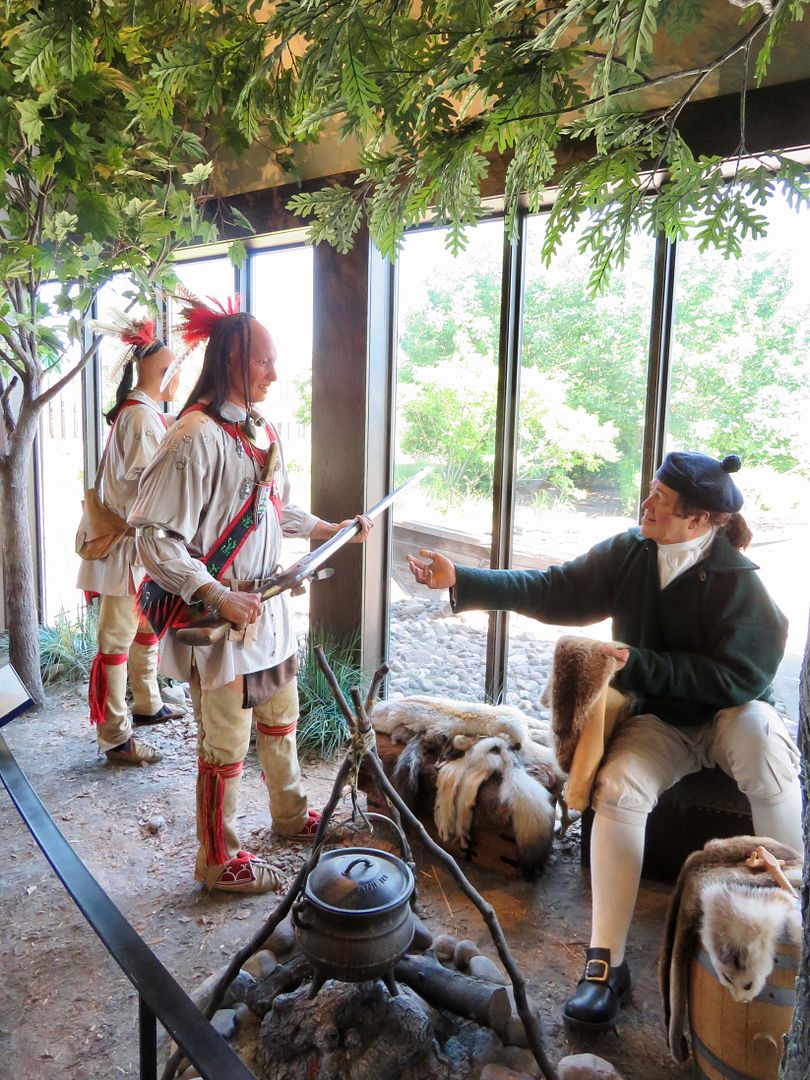
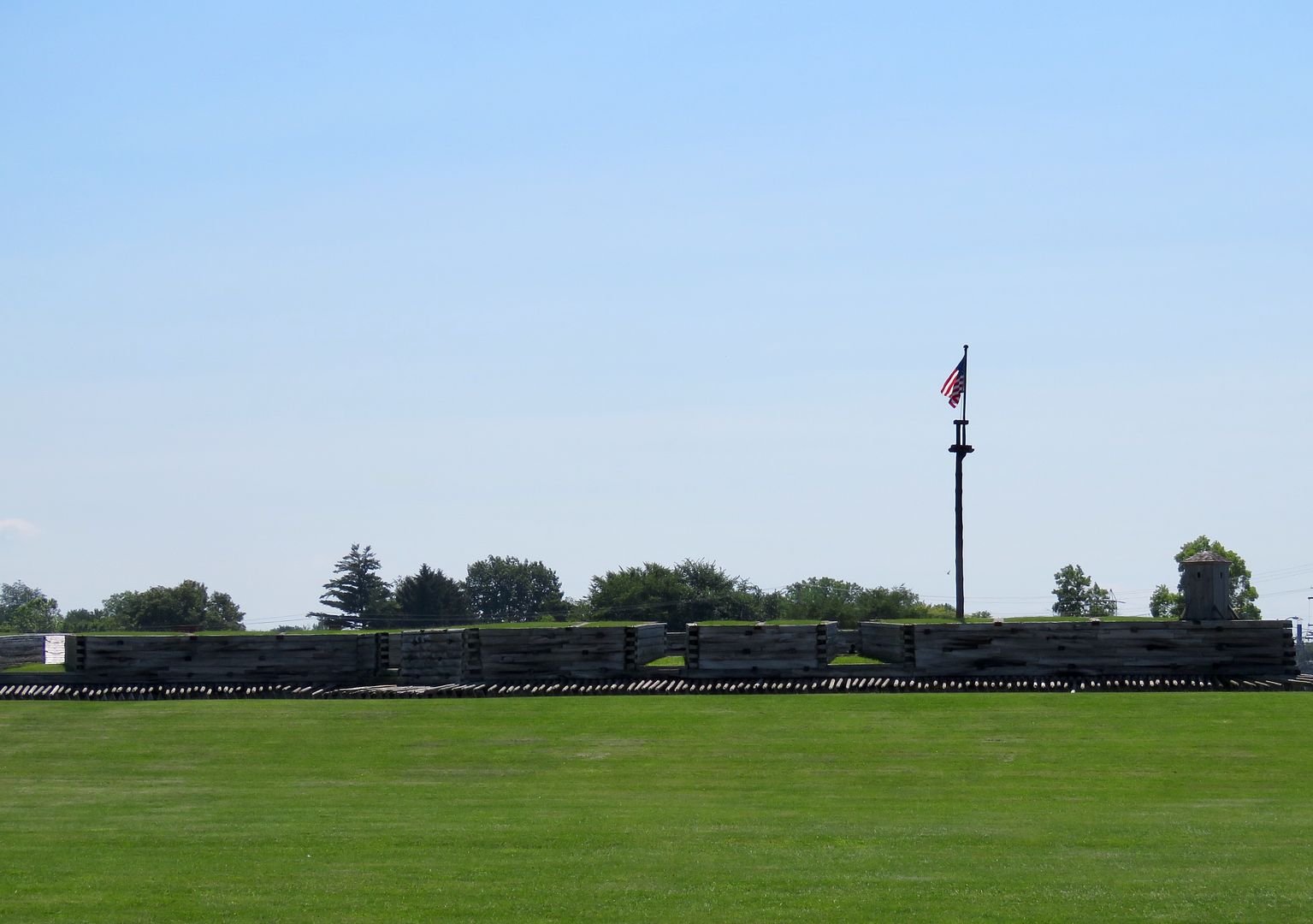
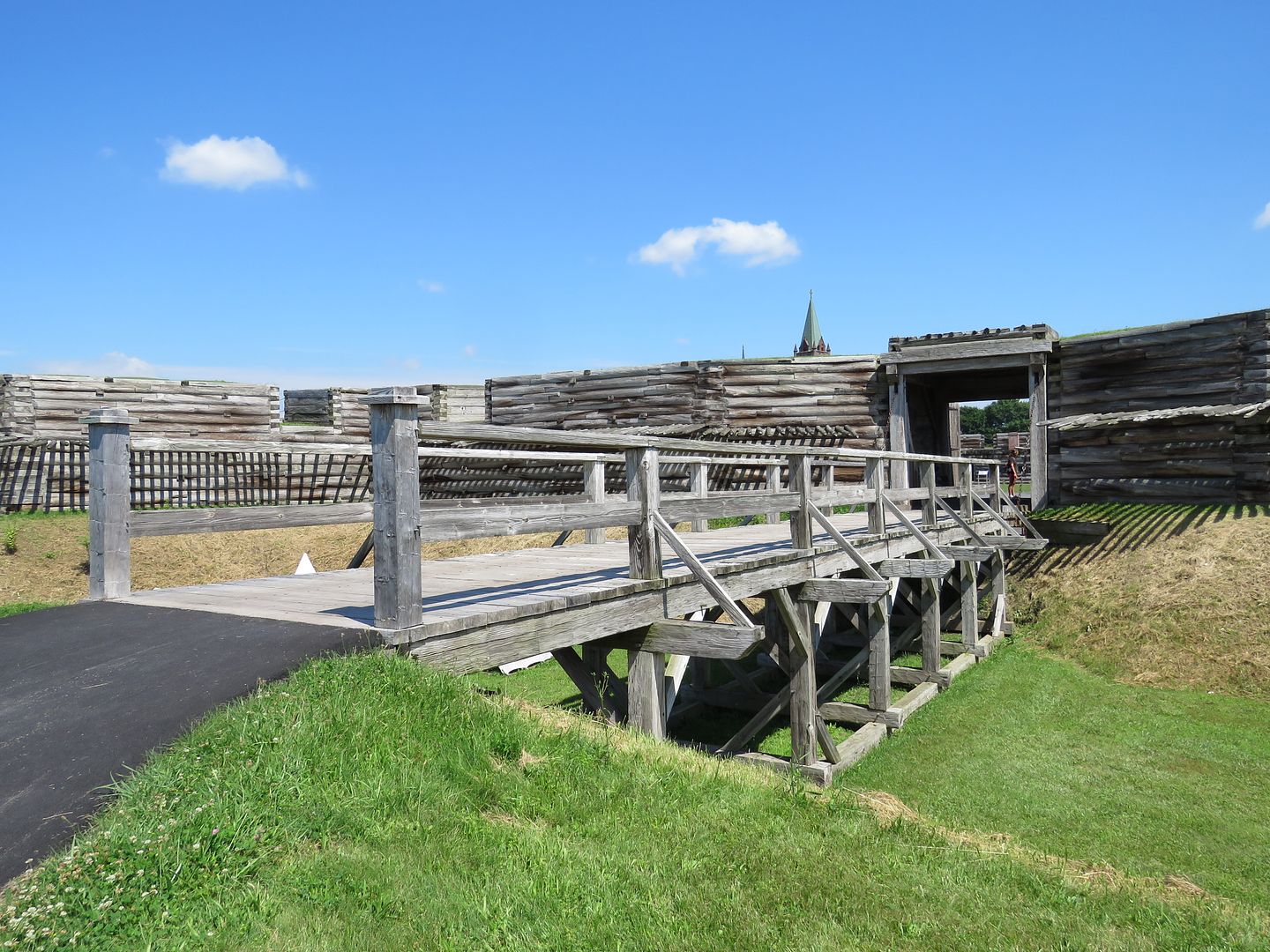
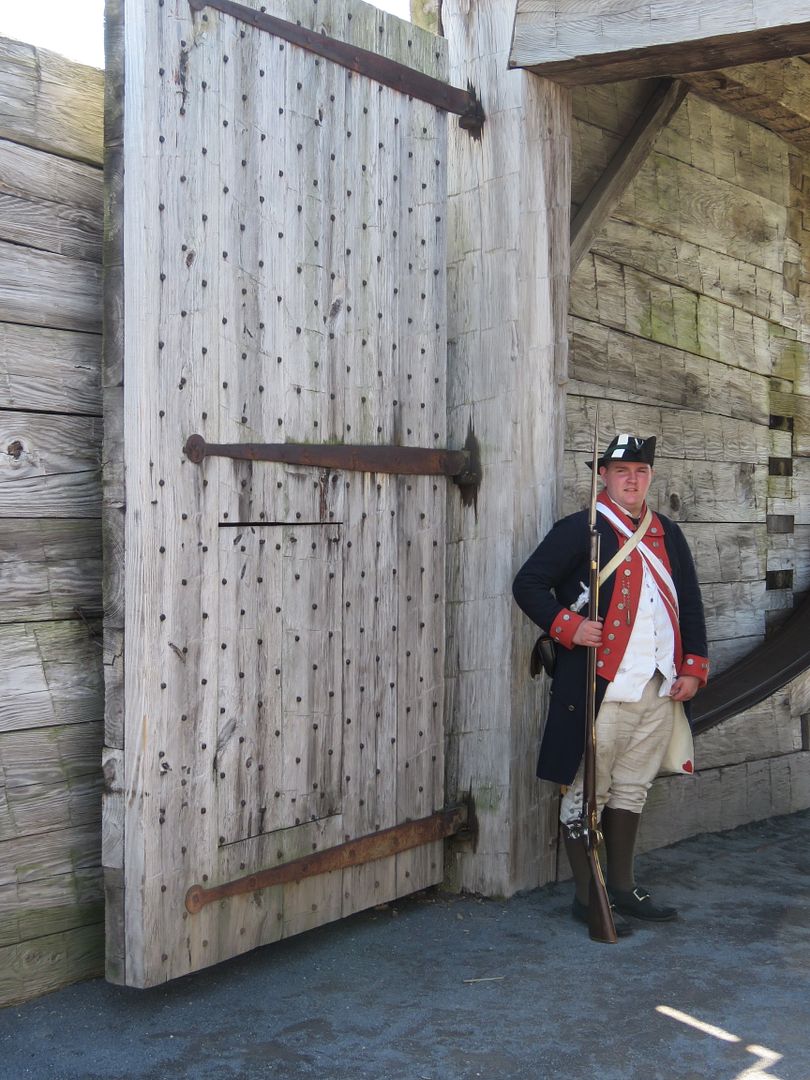
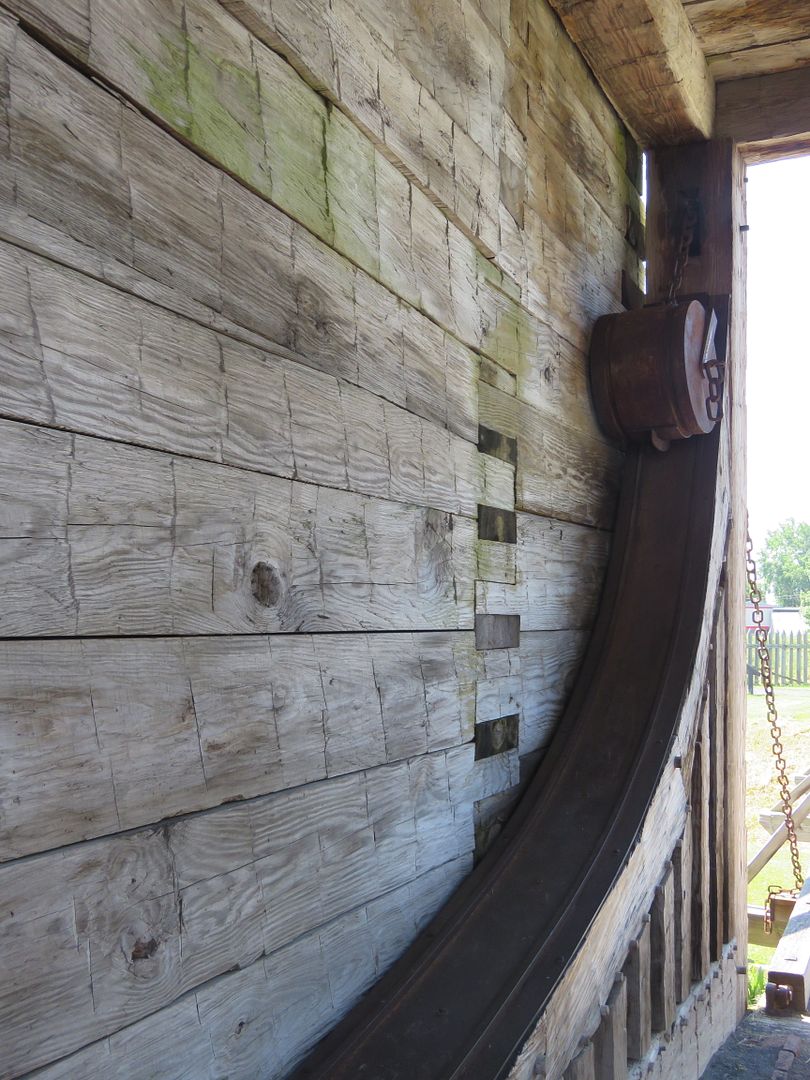
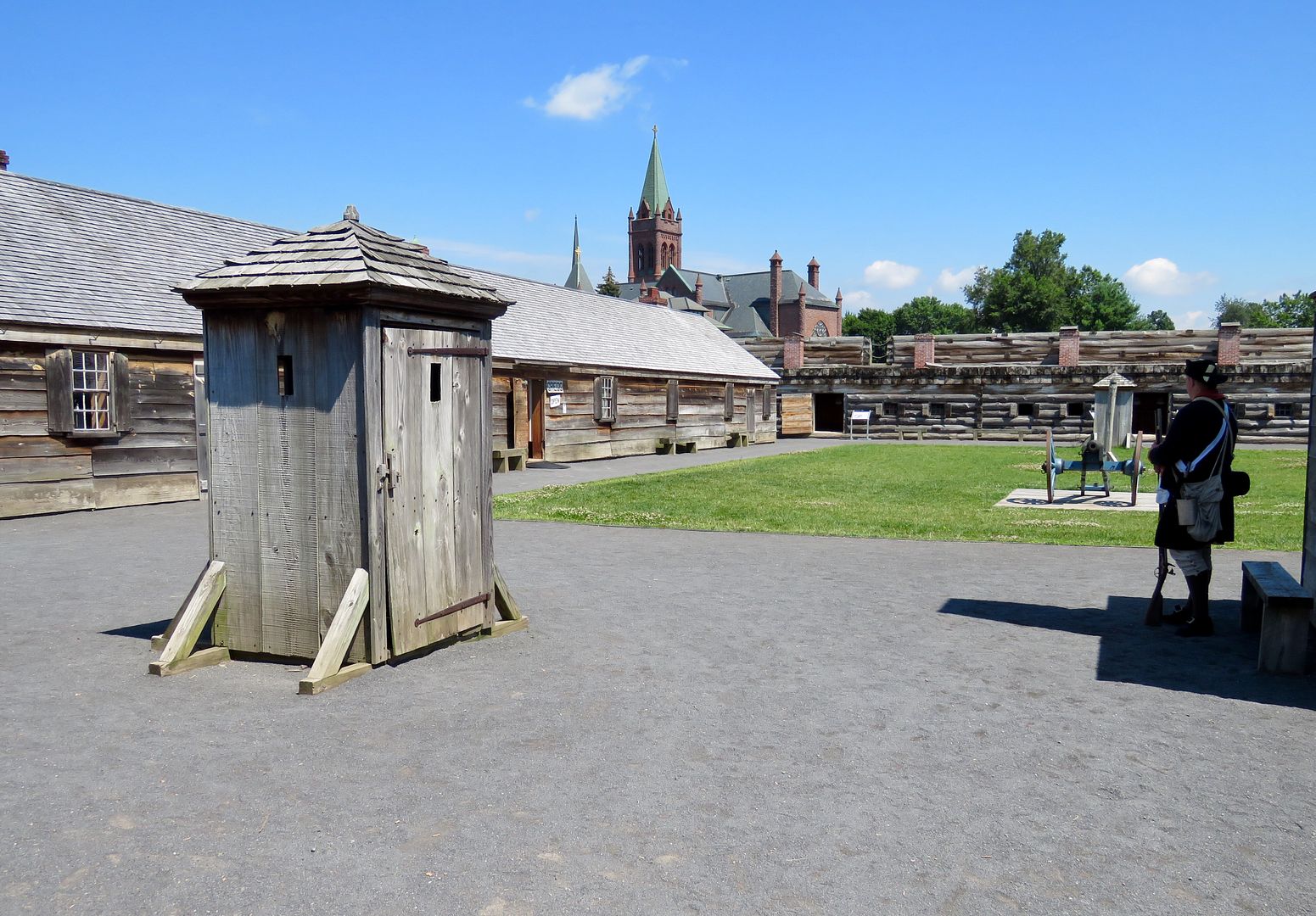

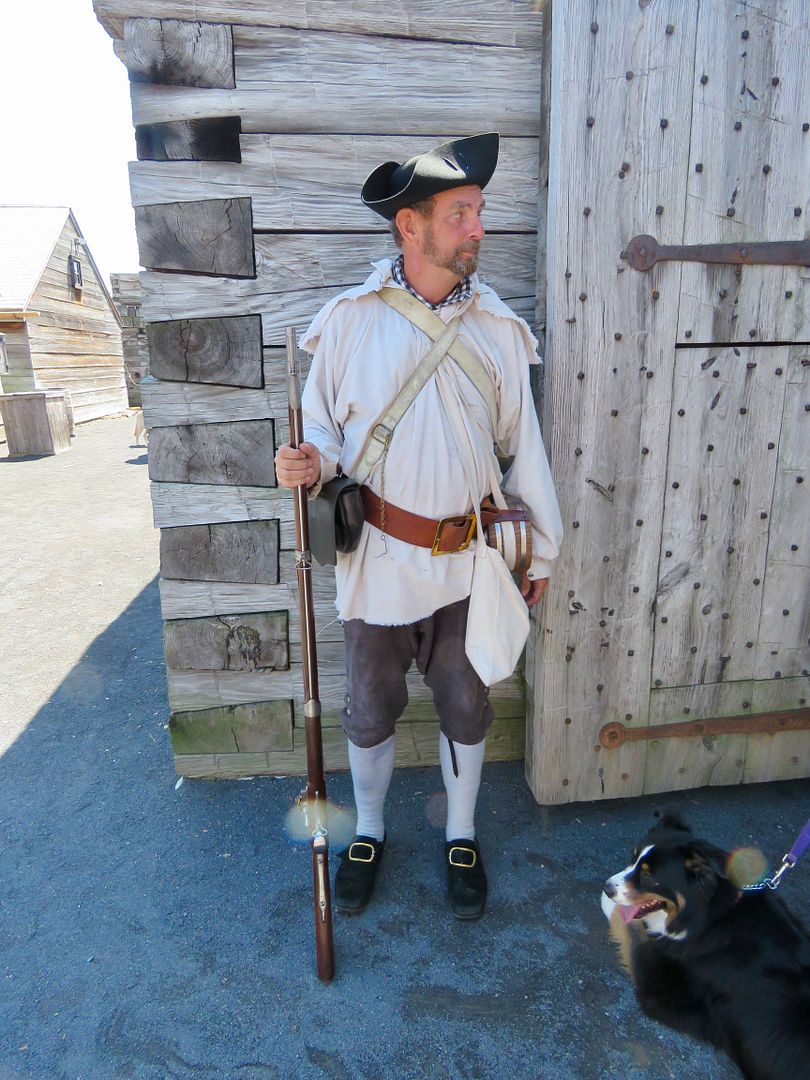

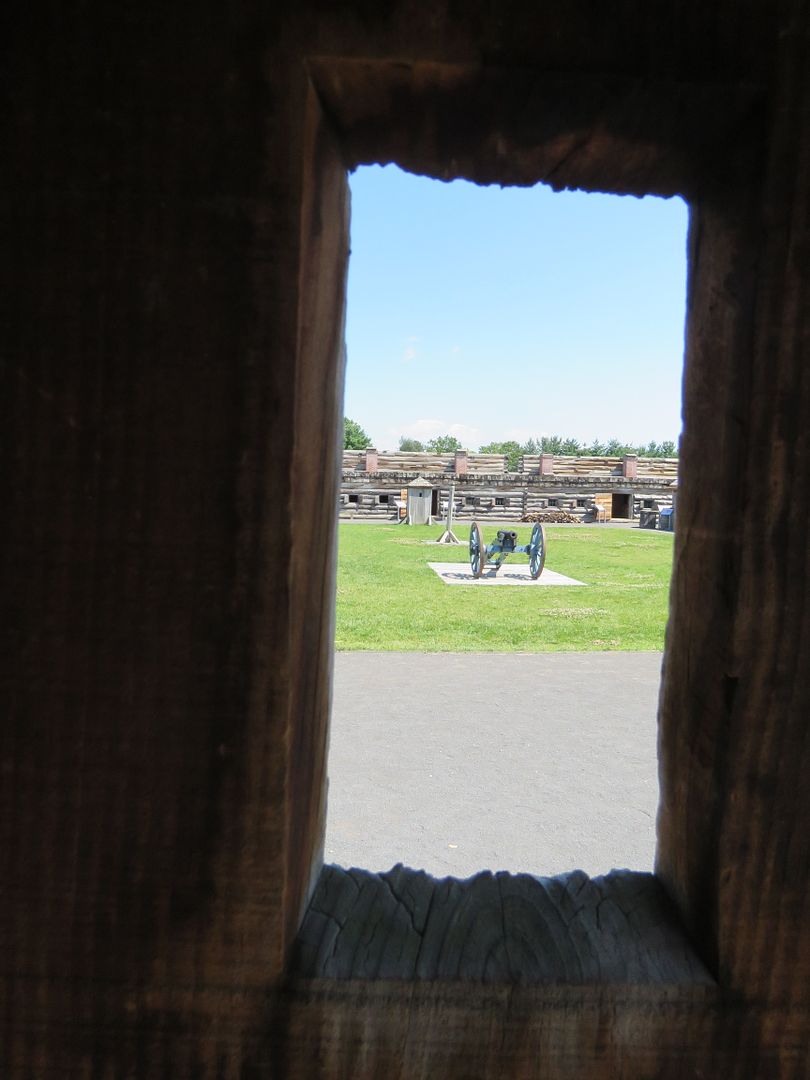
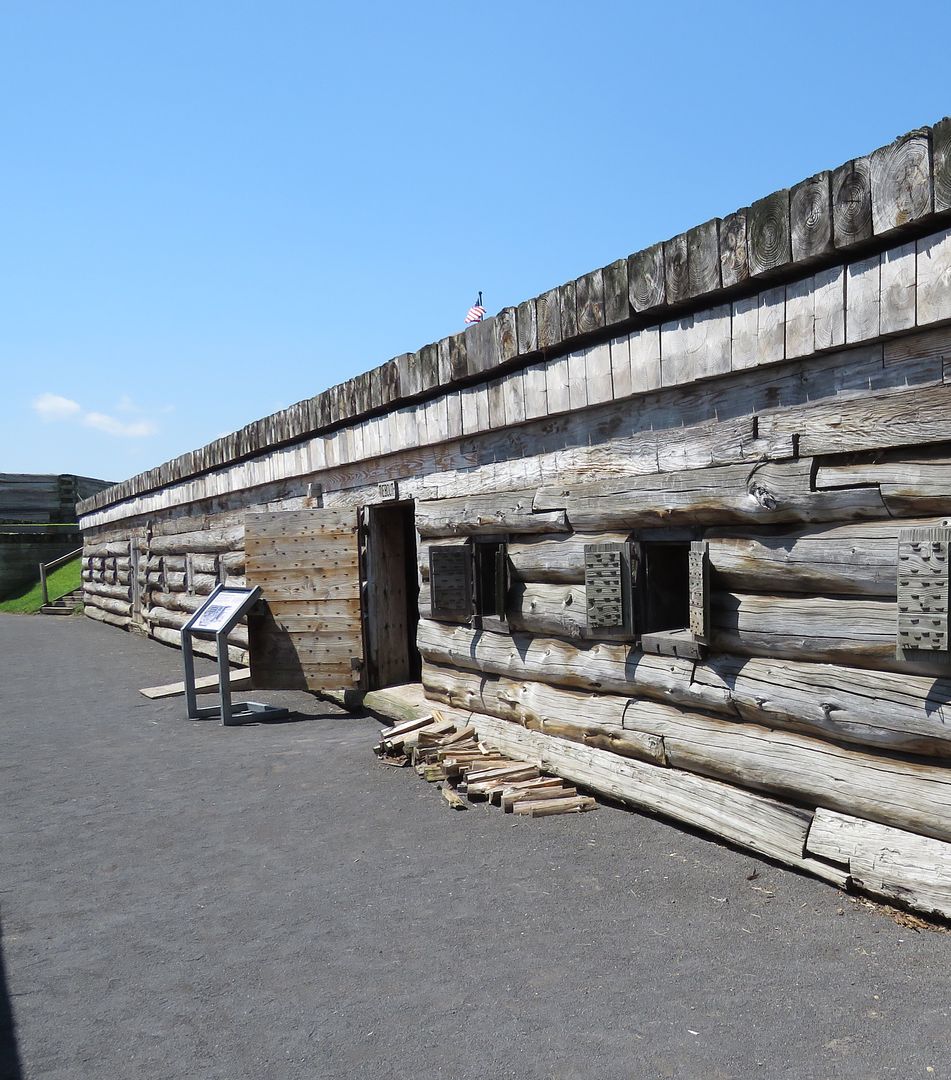
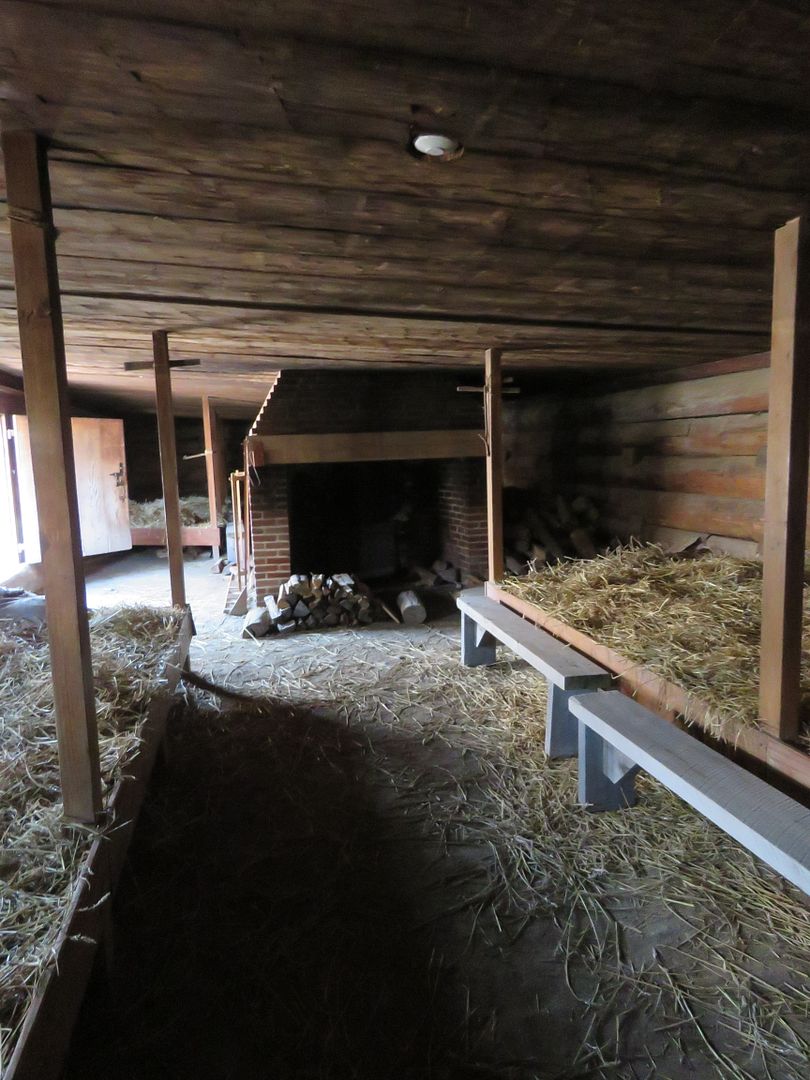
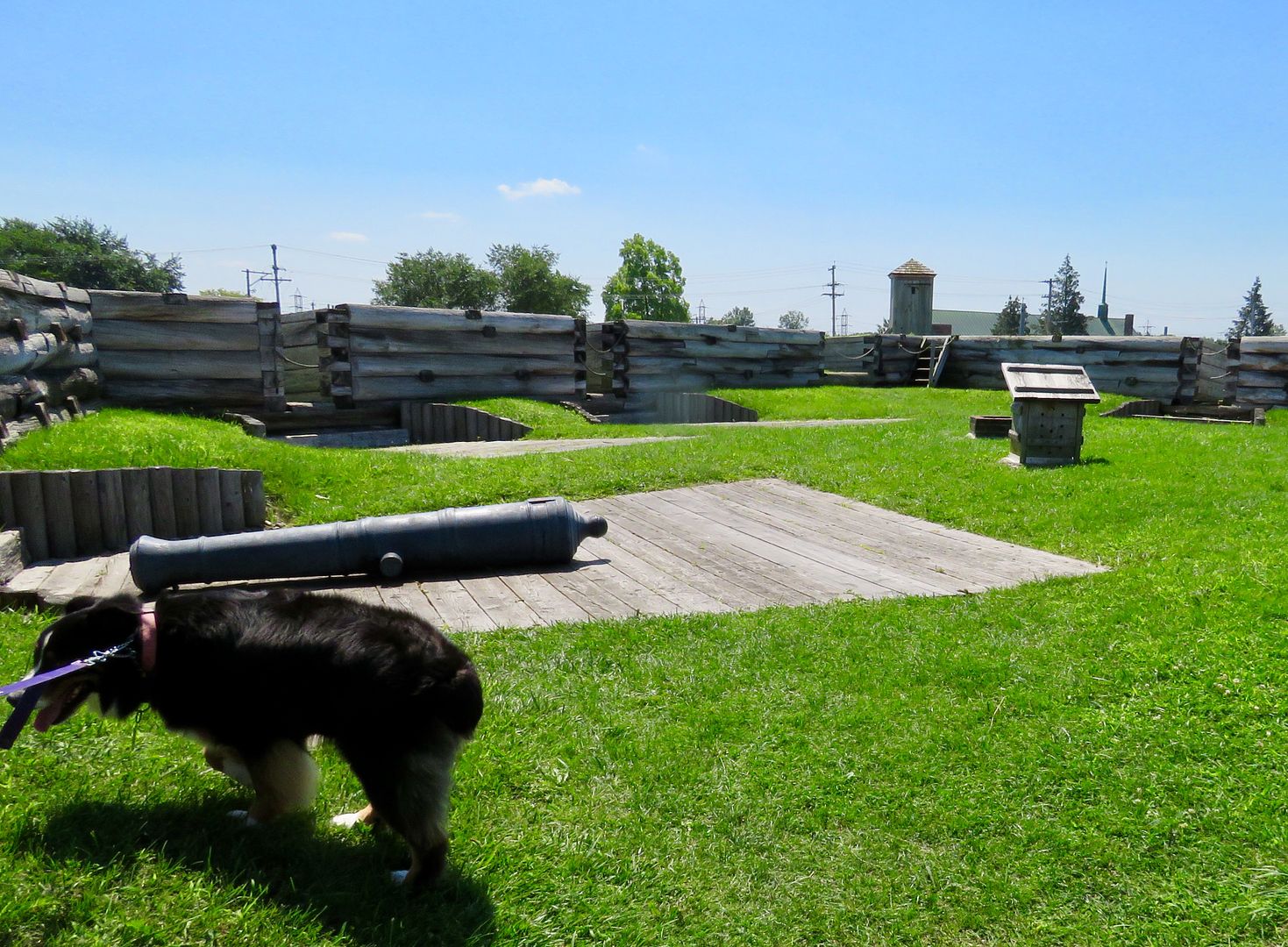
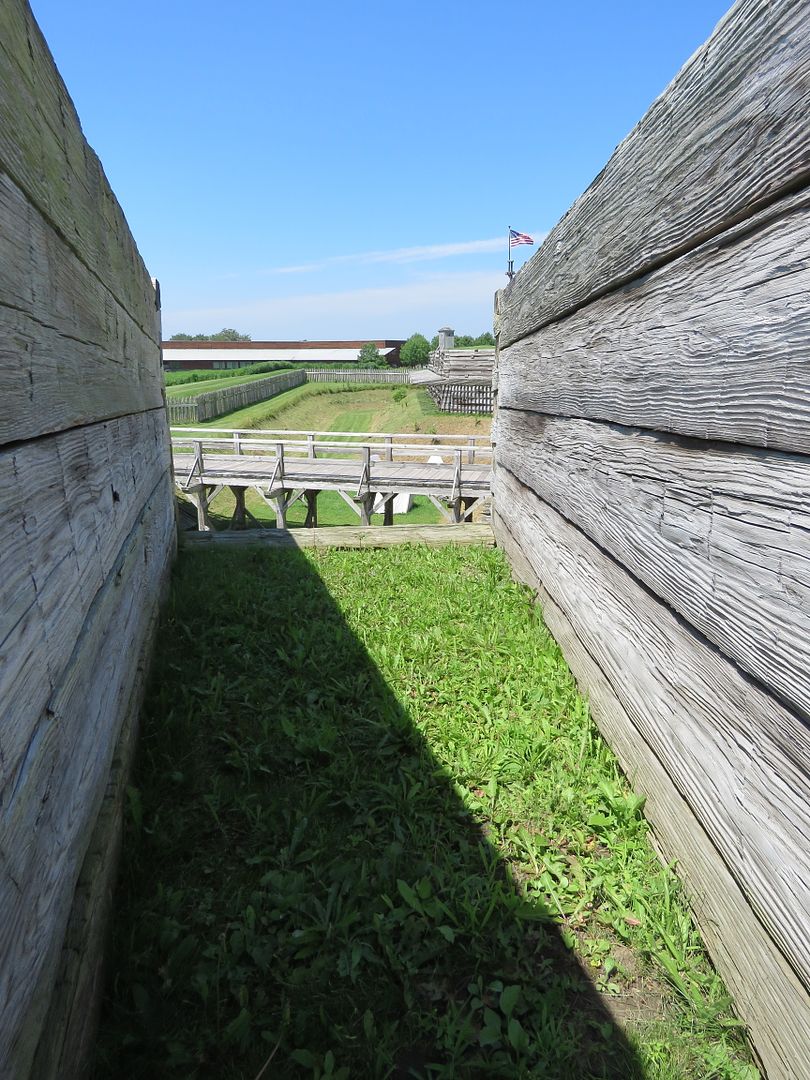
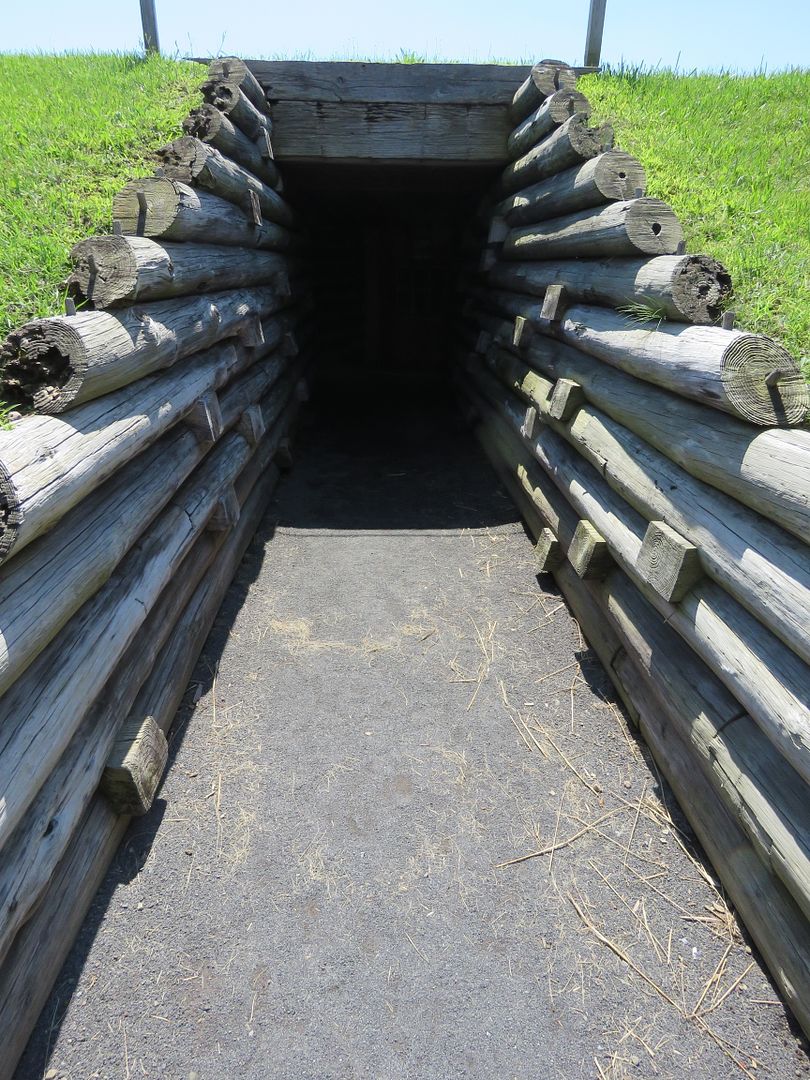
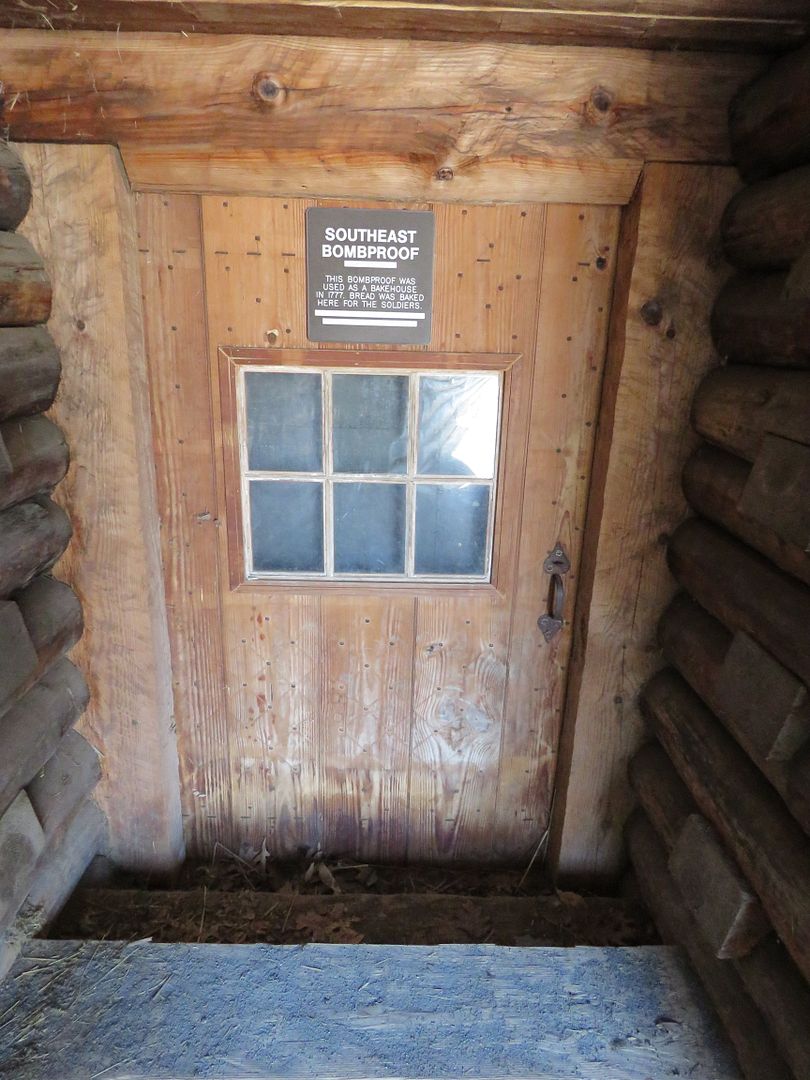
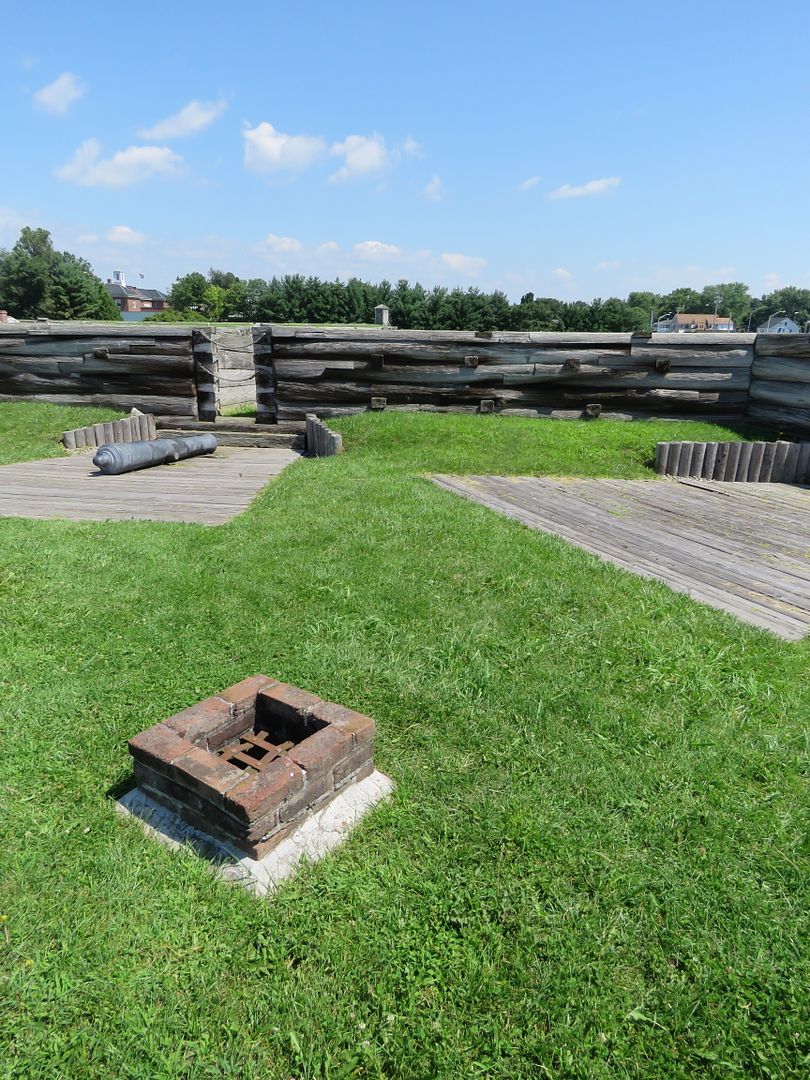
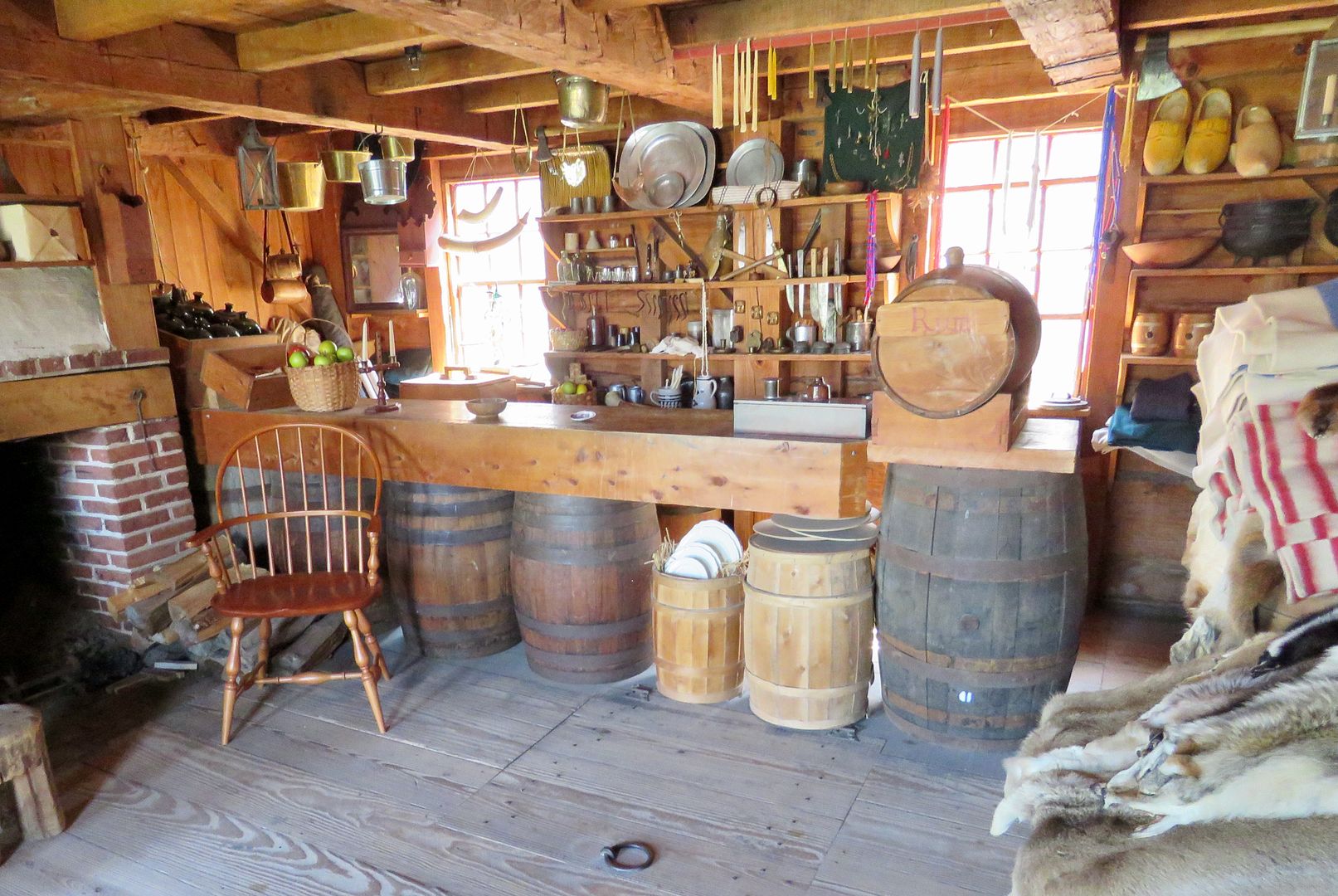
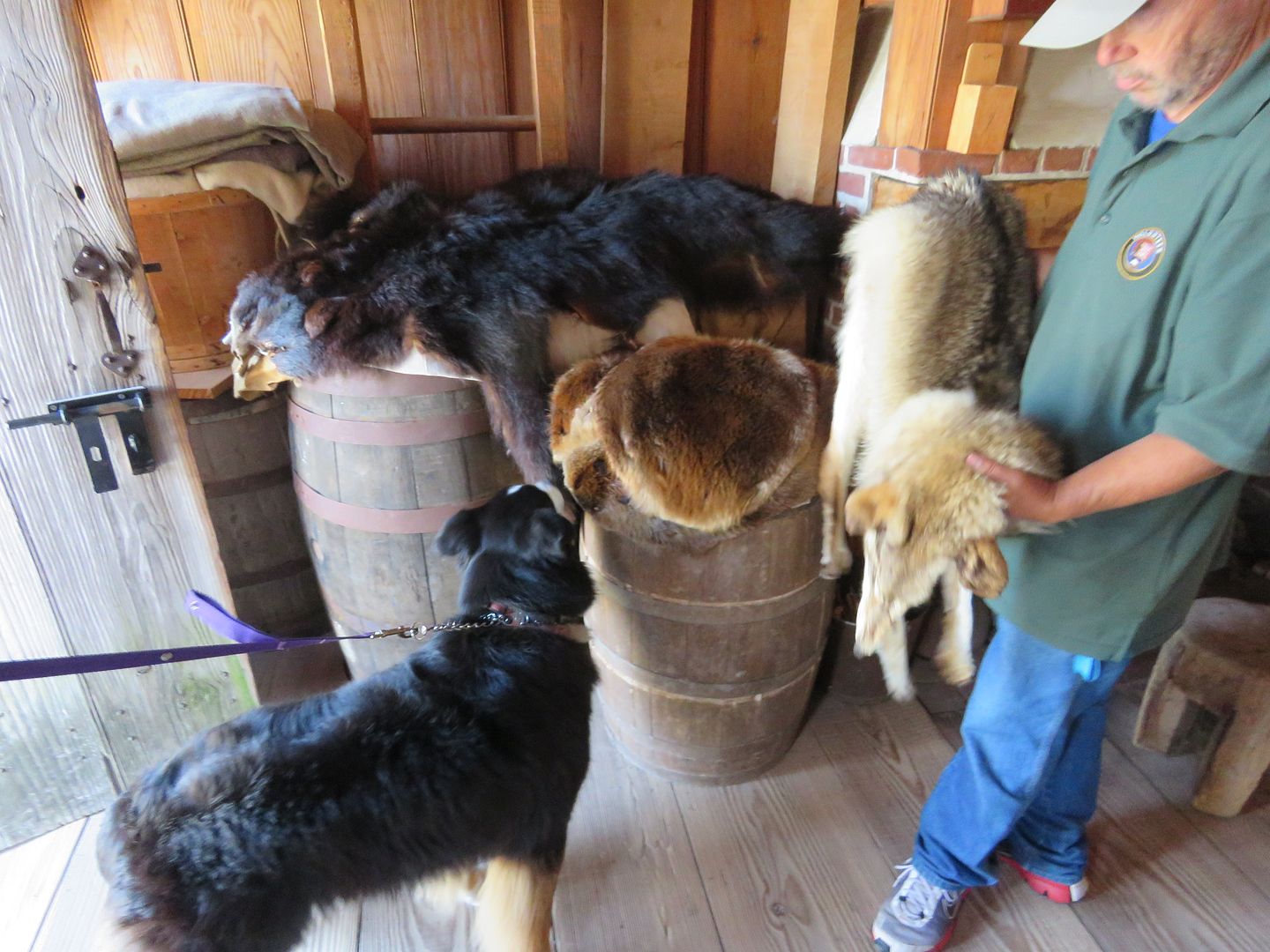
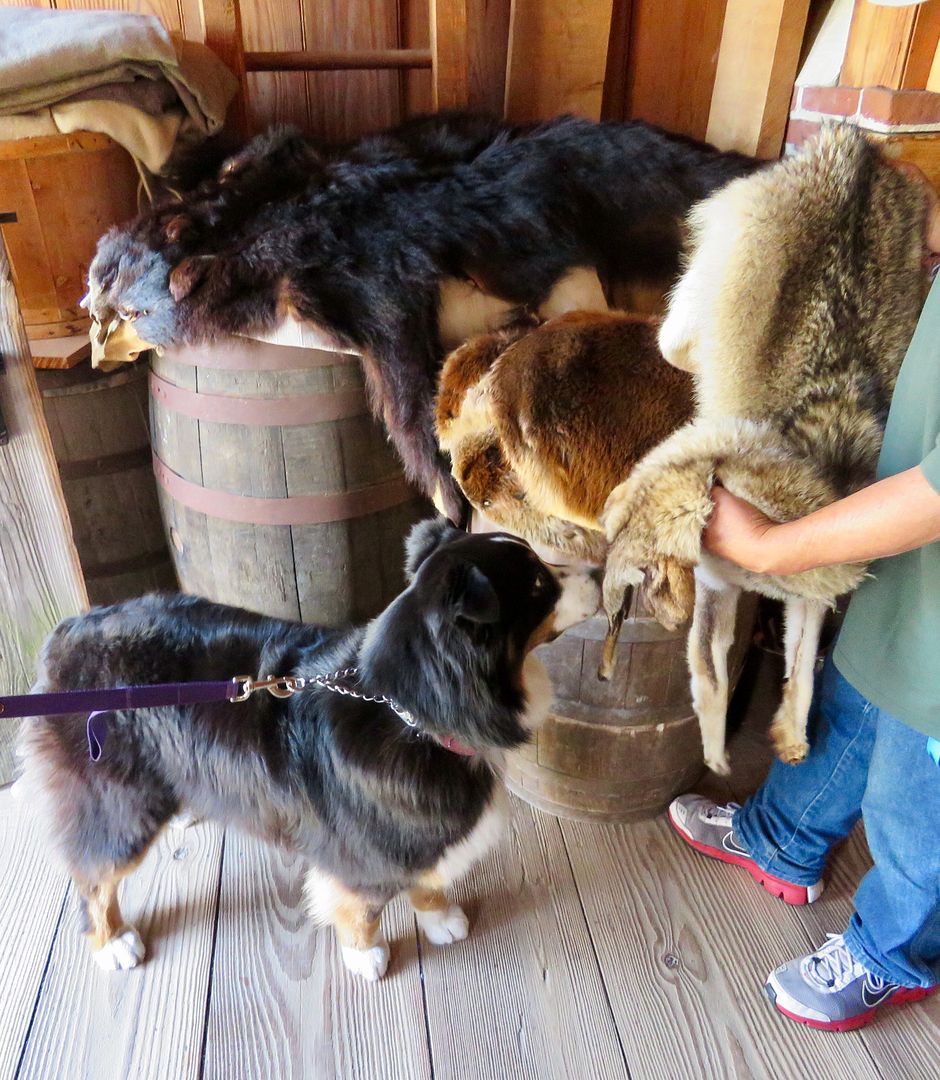
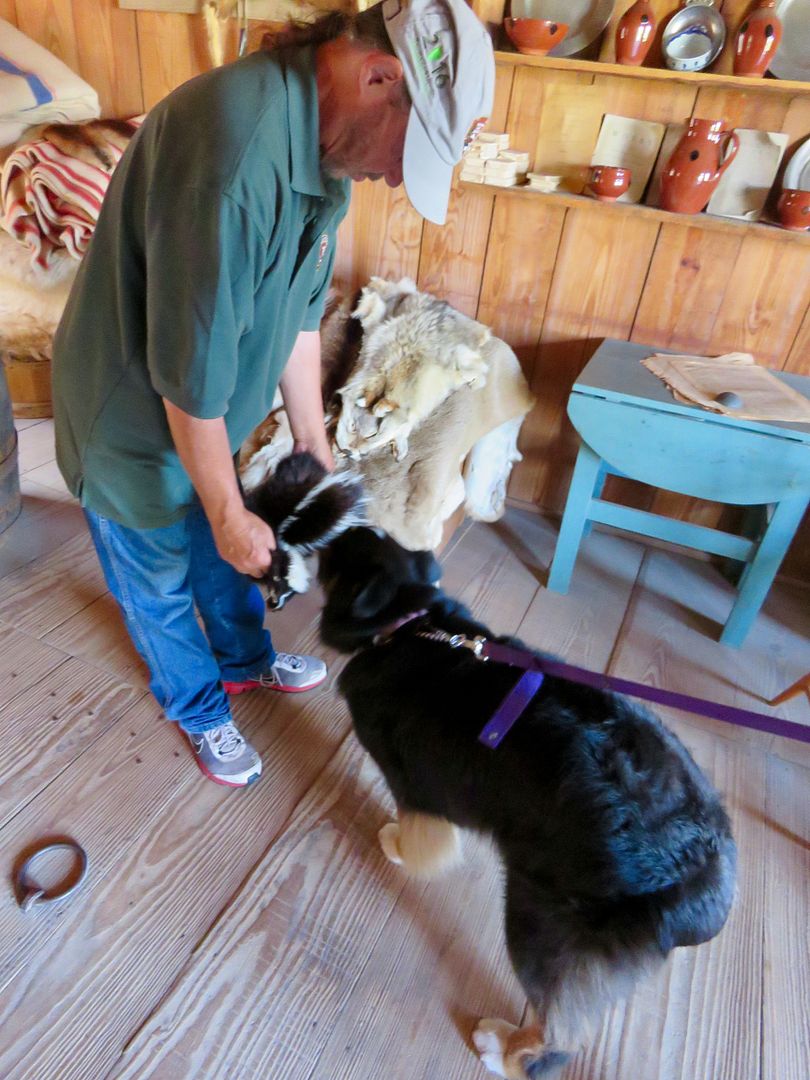
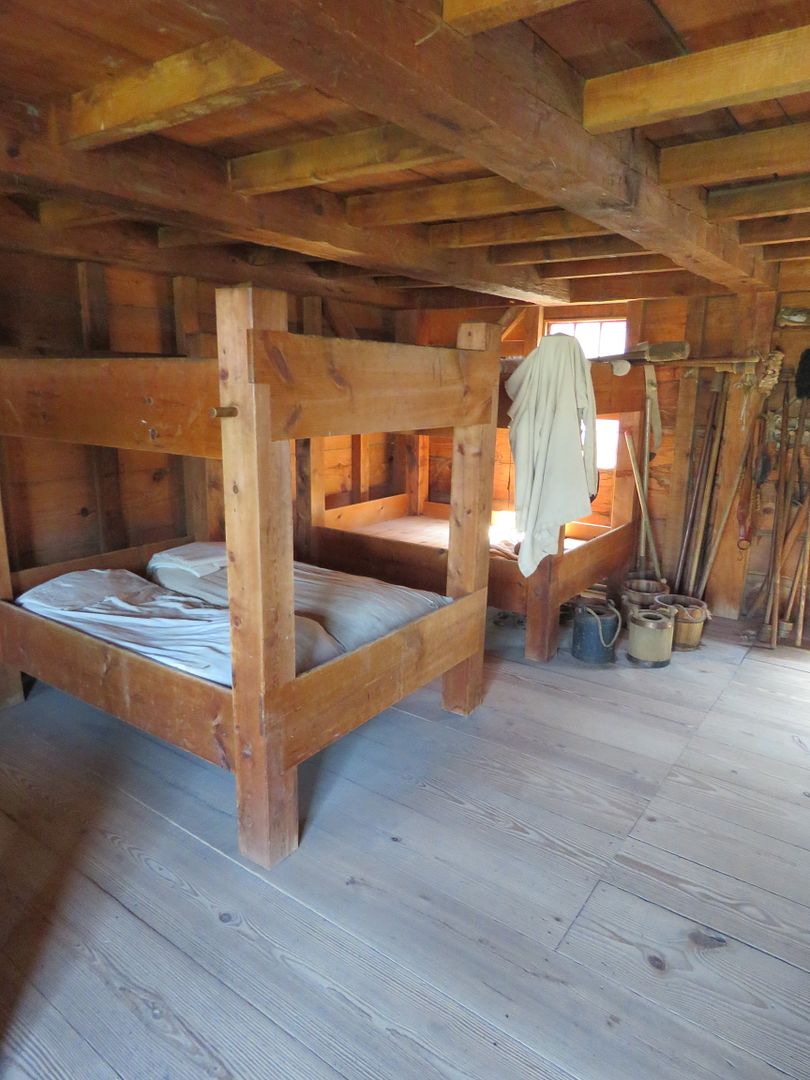
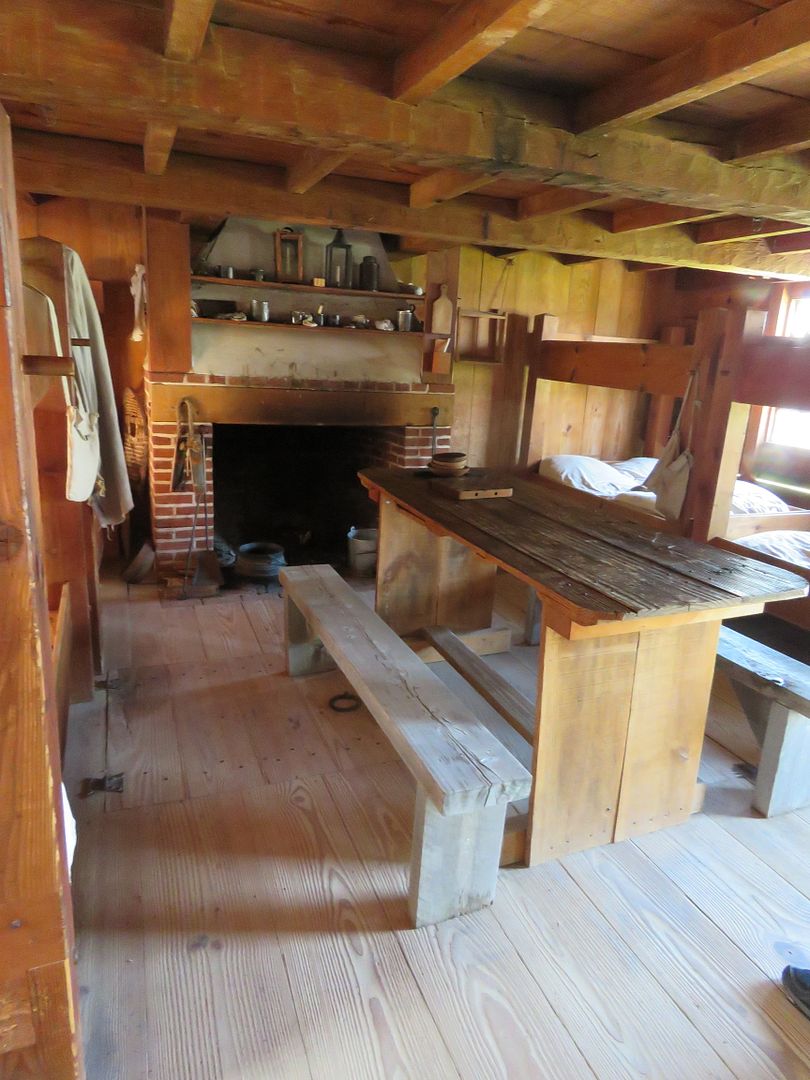

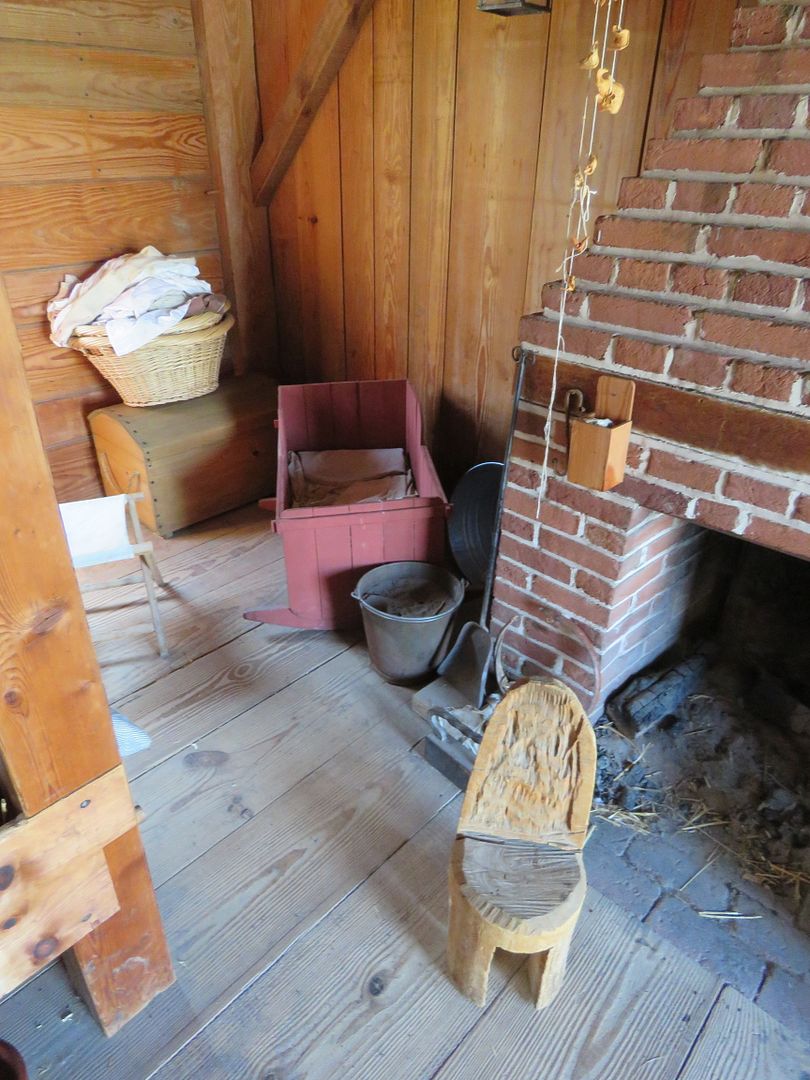
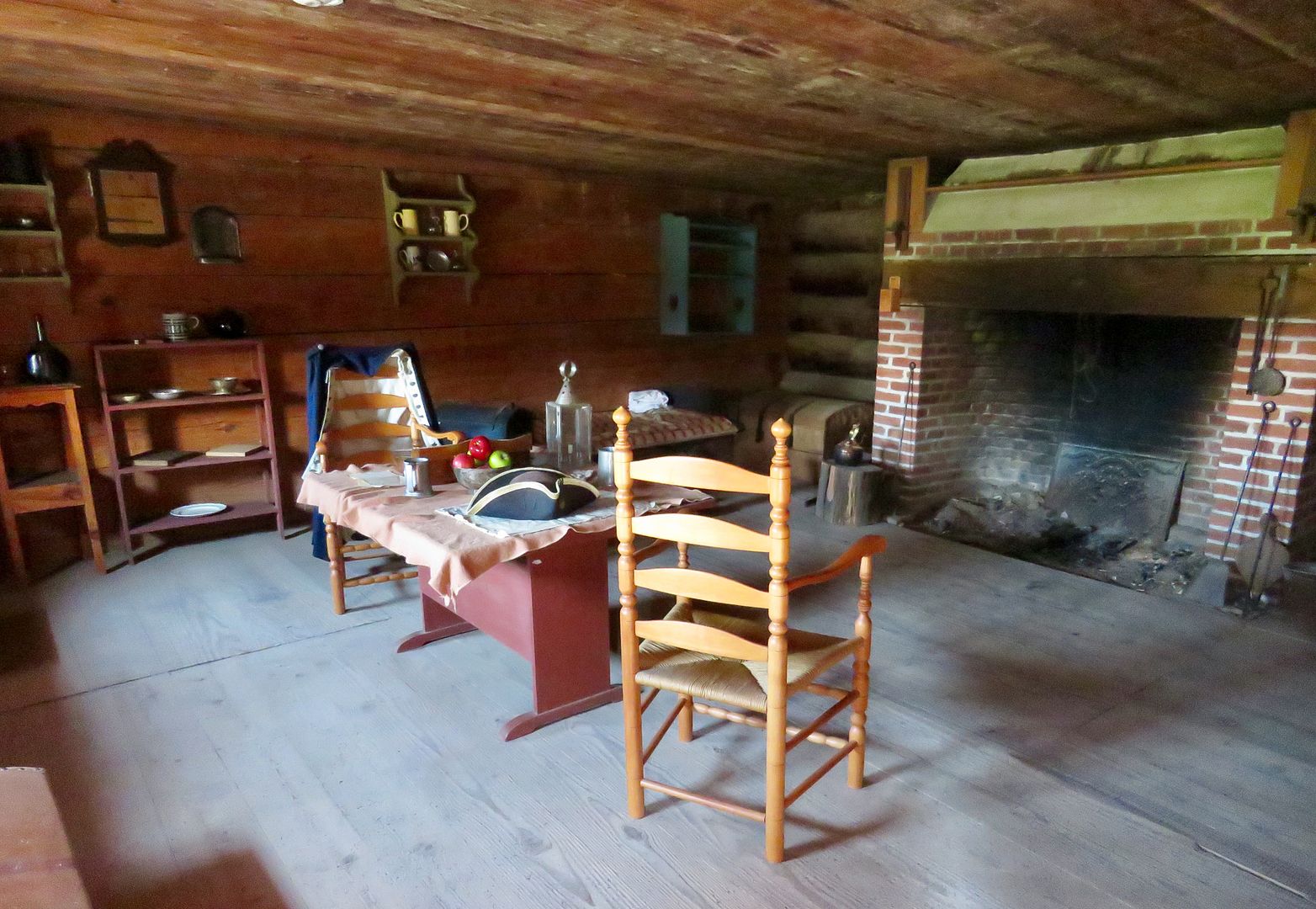
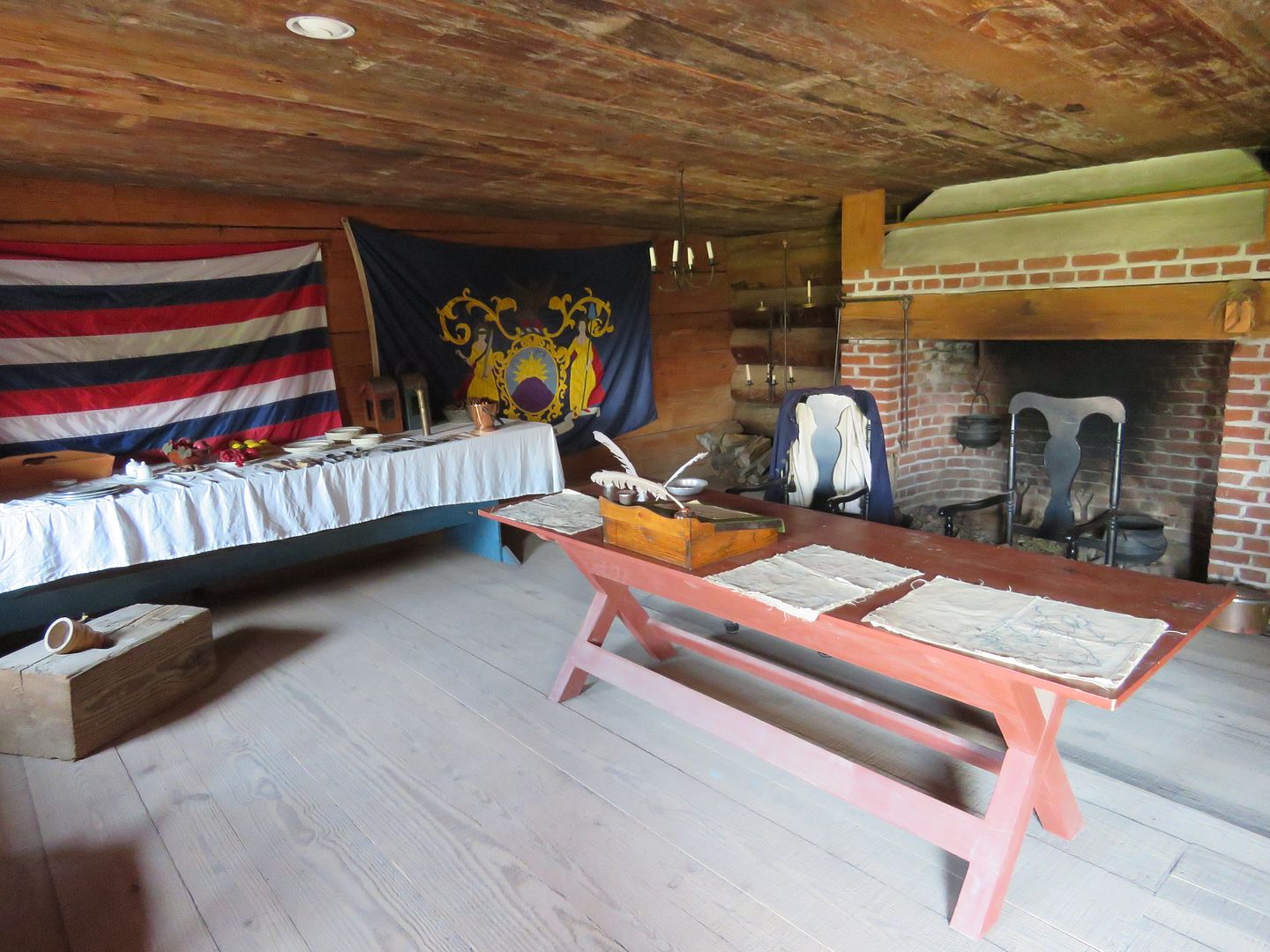
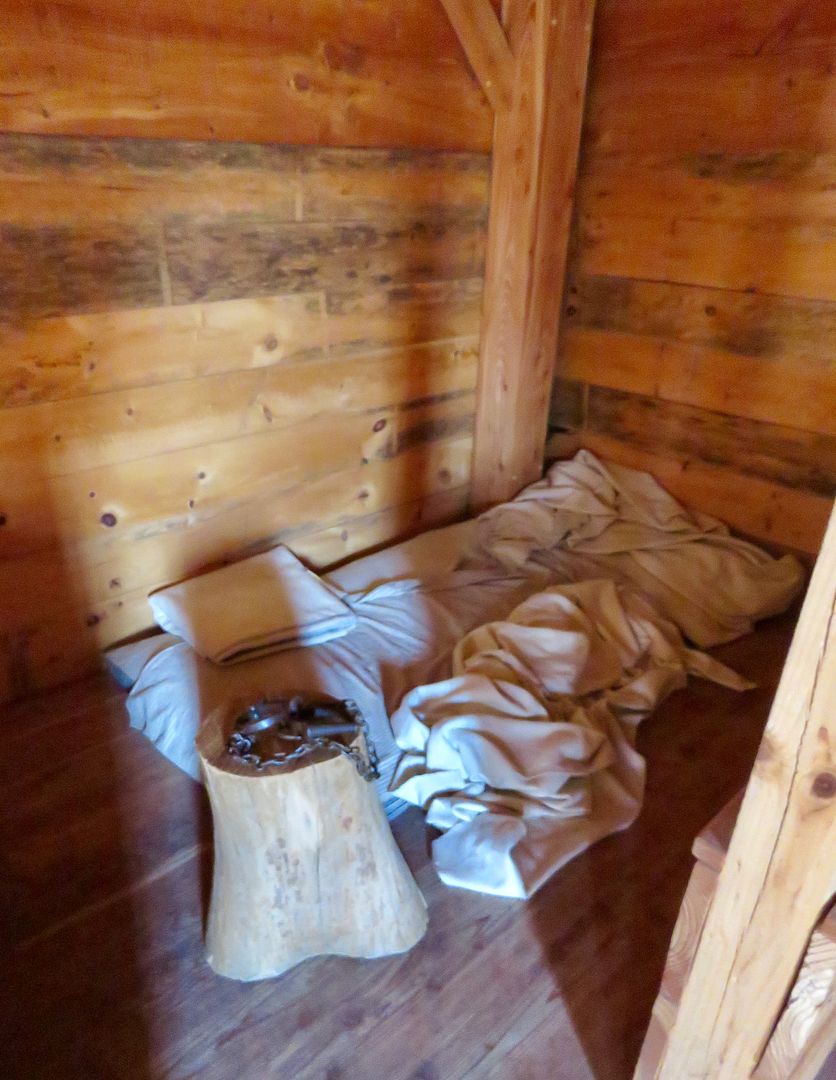
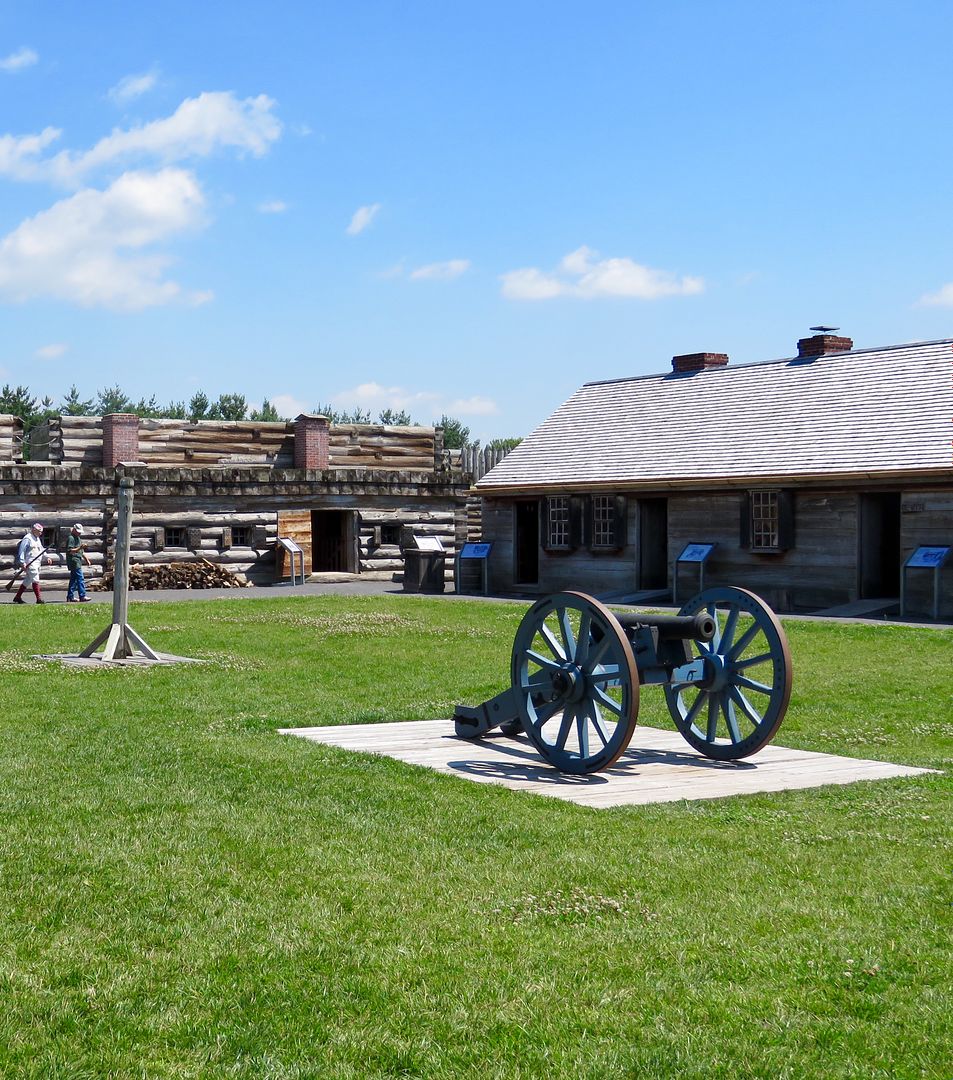
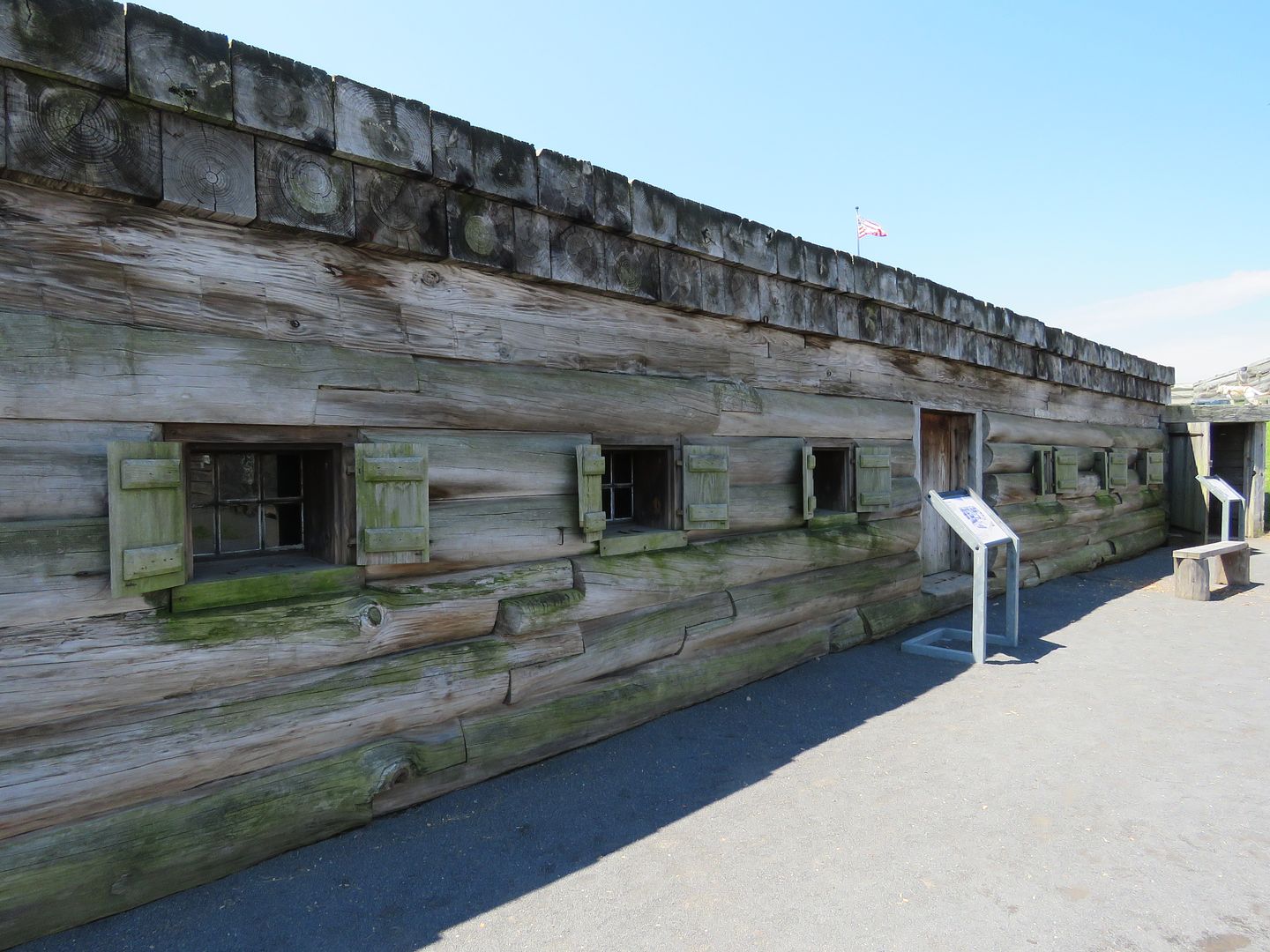
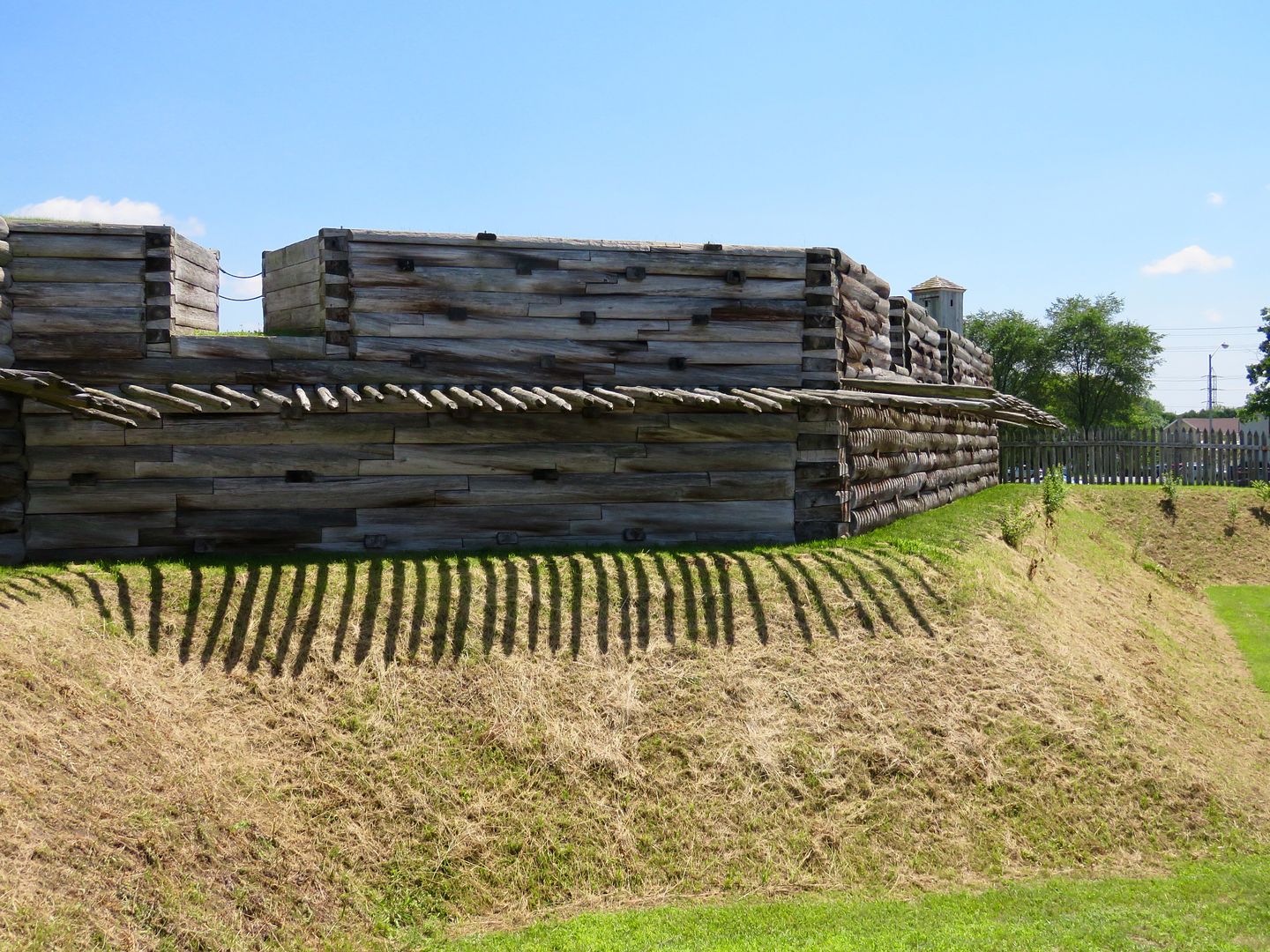
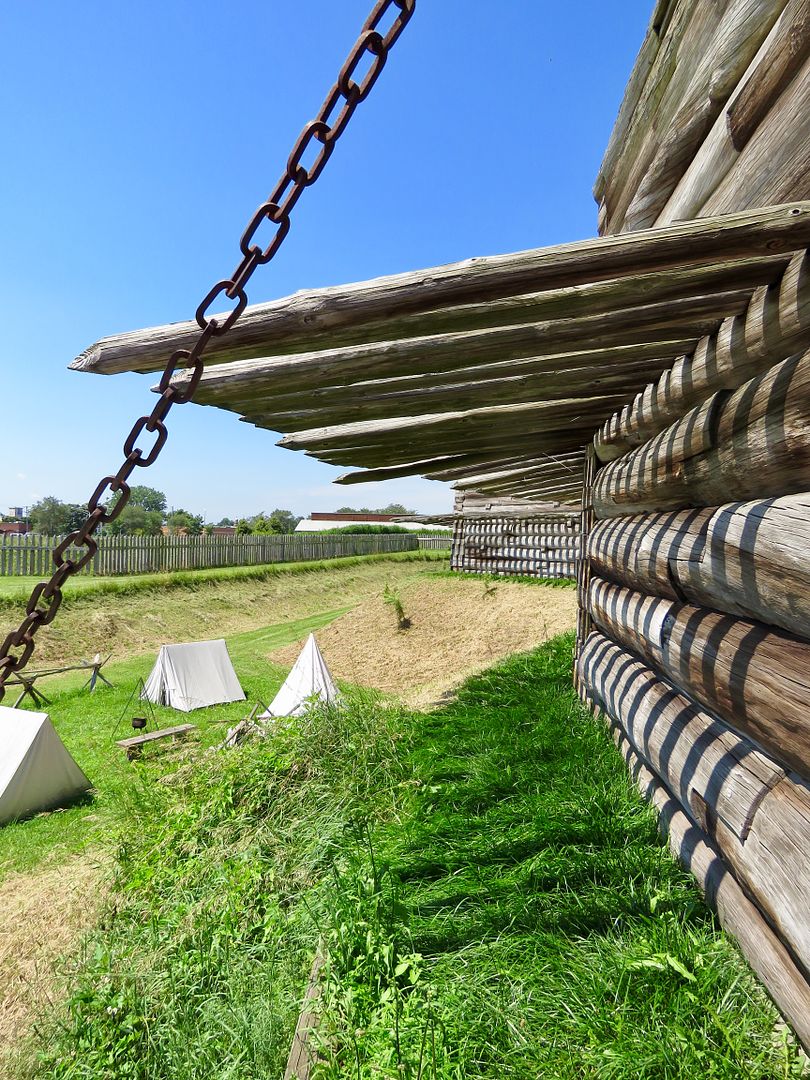
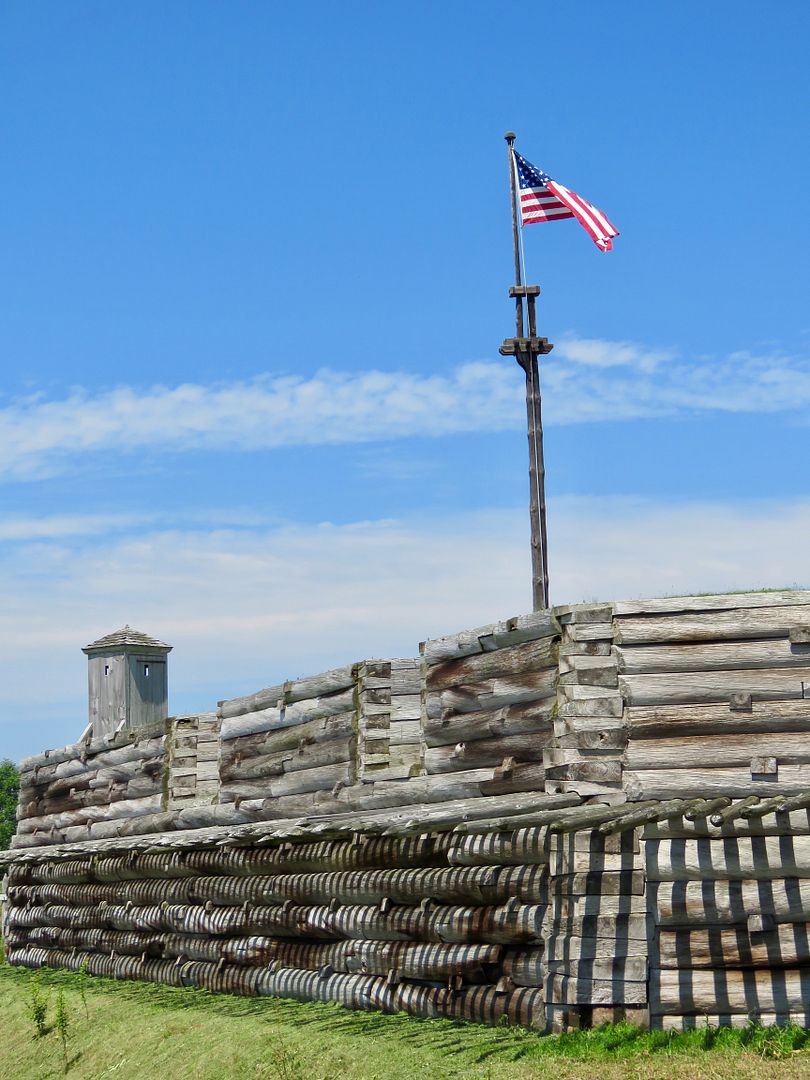
No comments:
Post a Comment